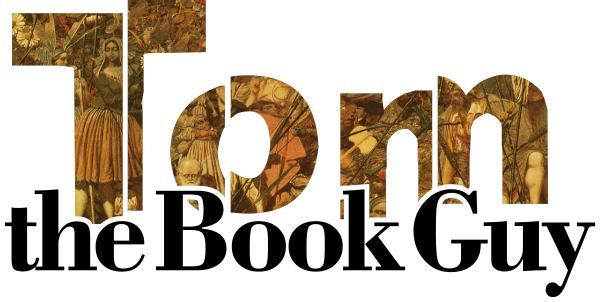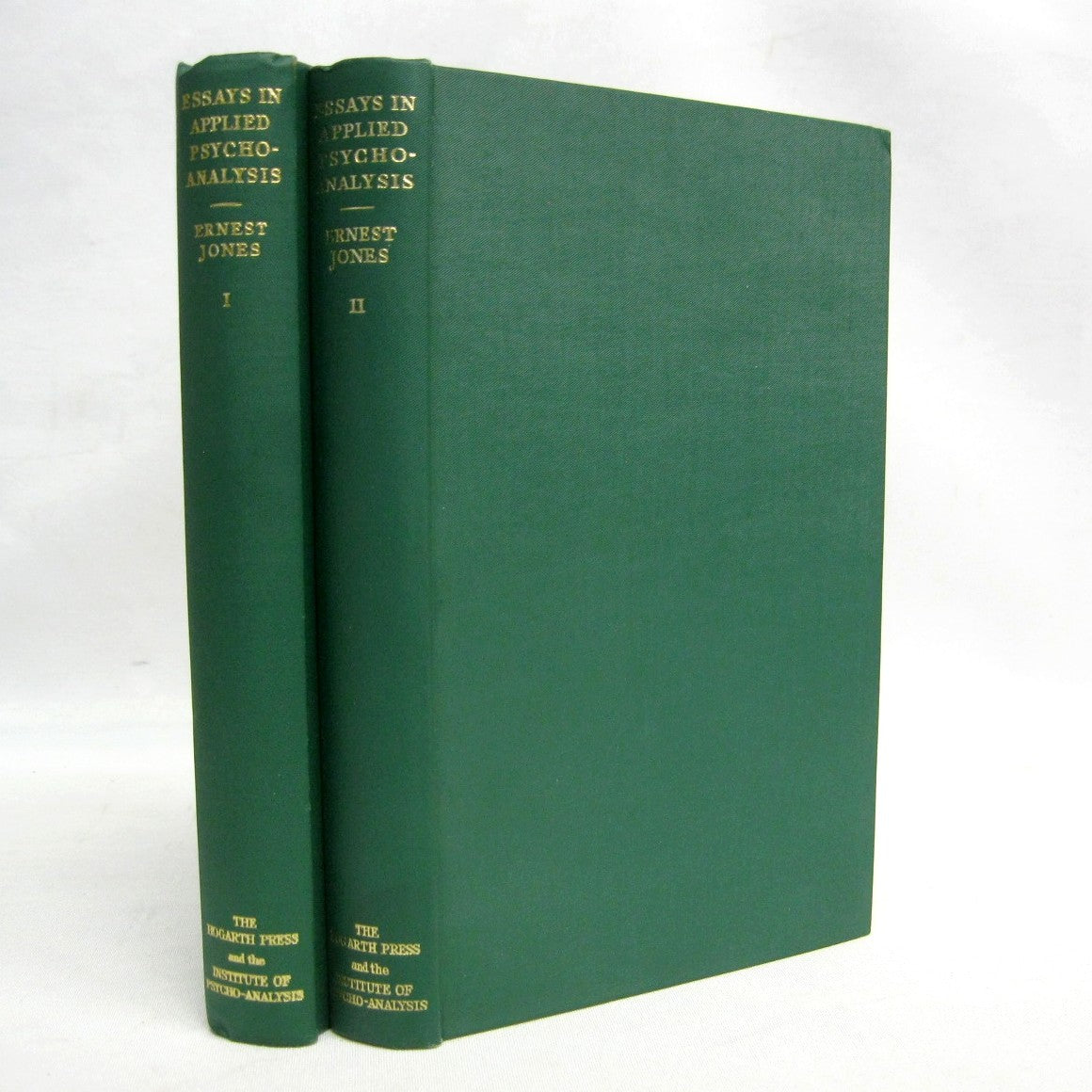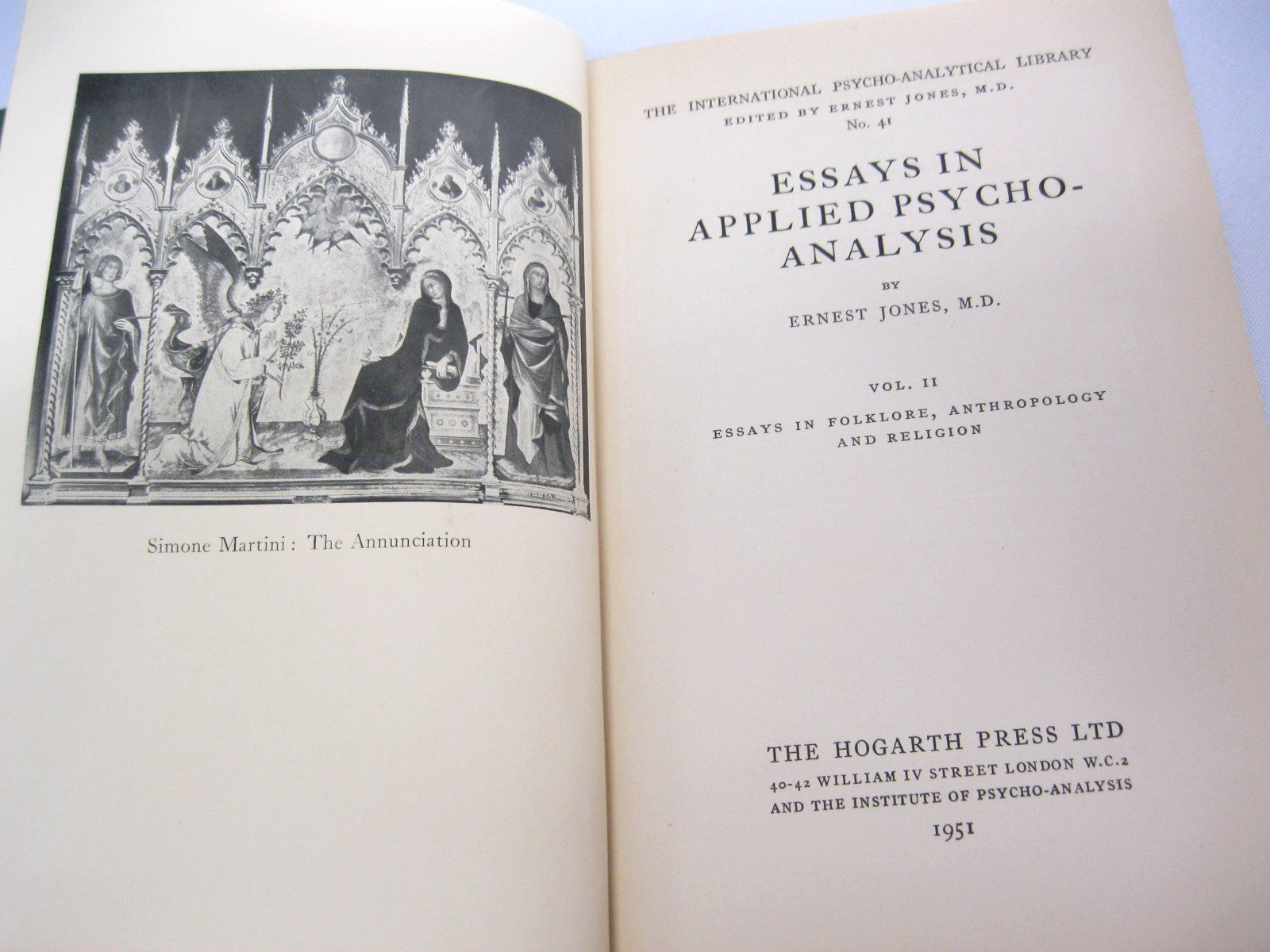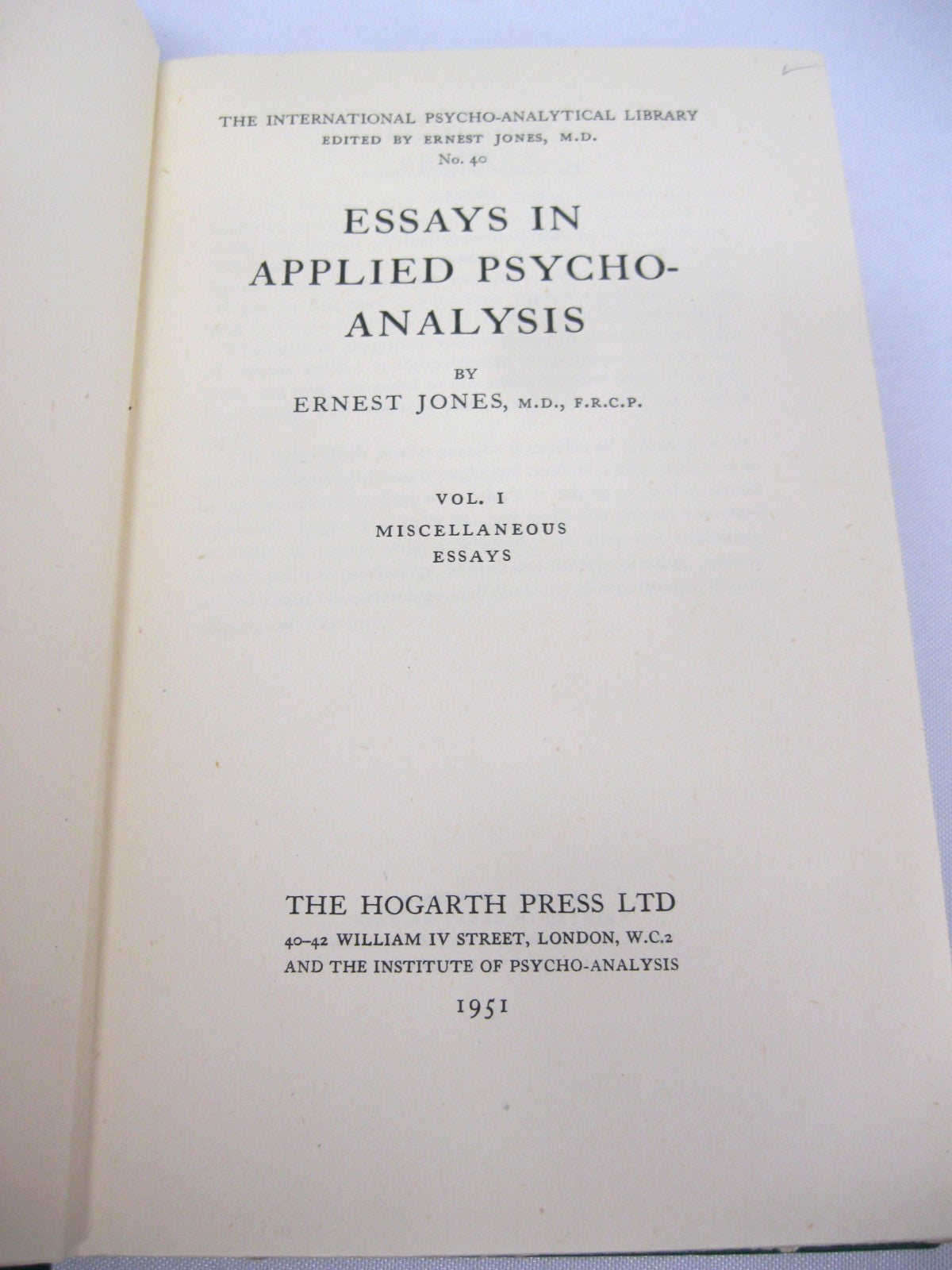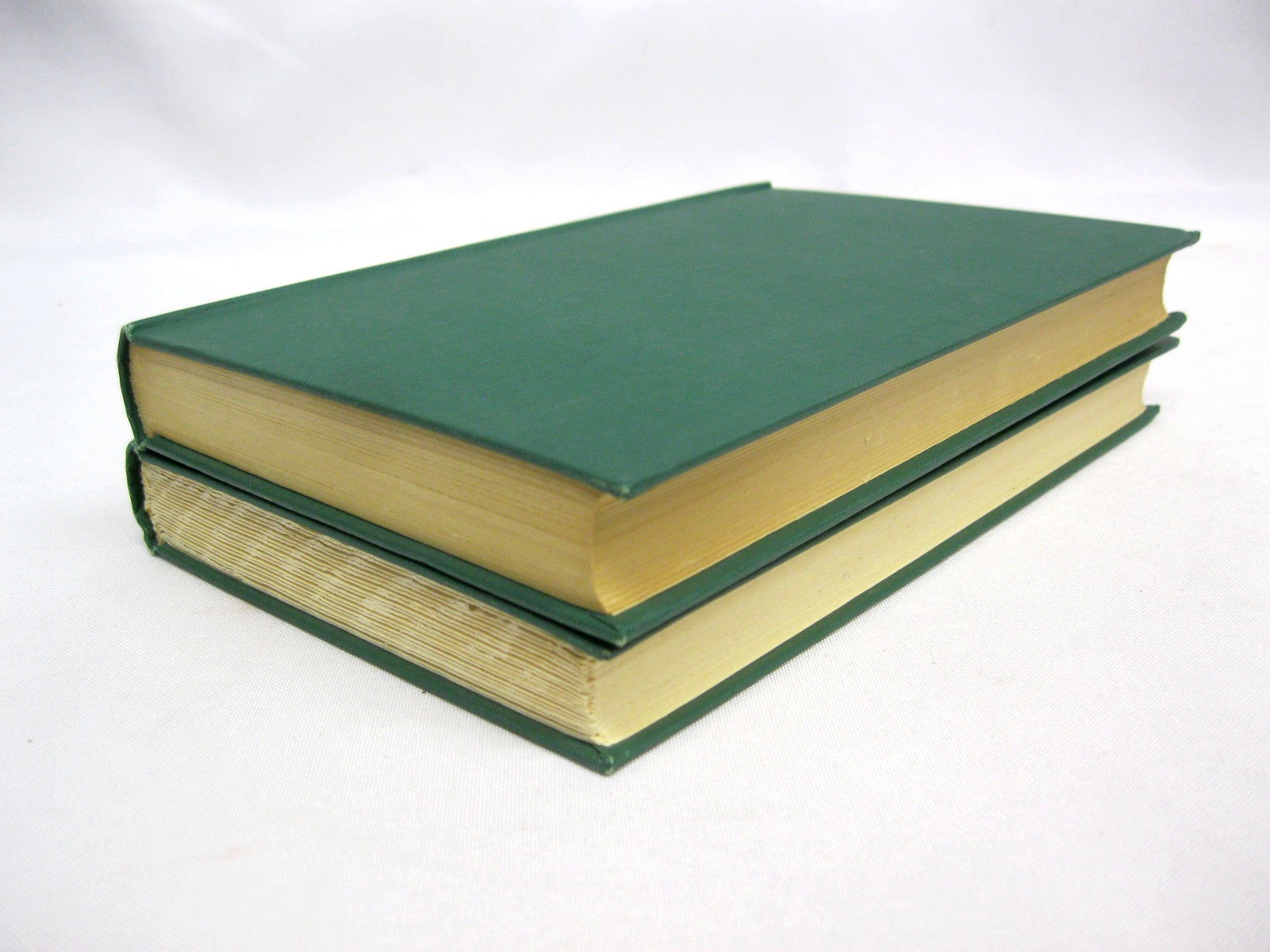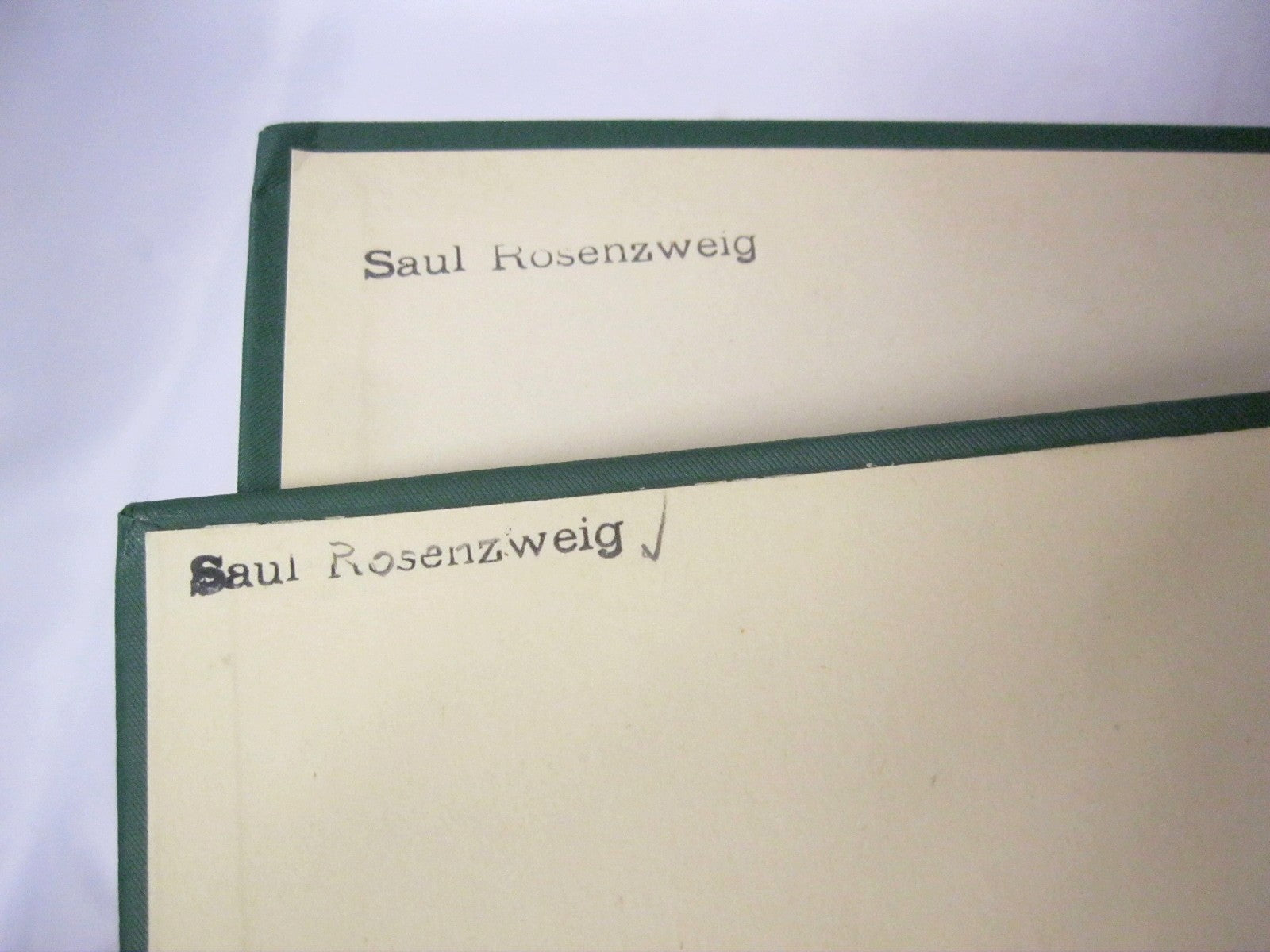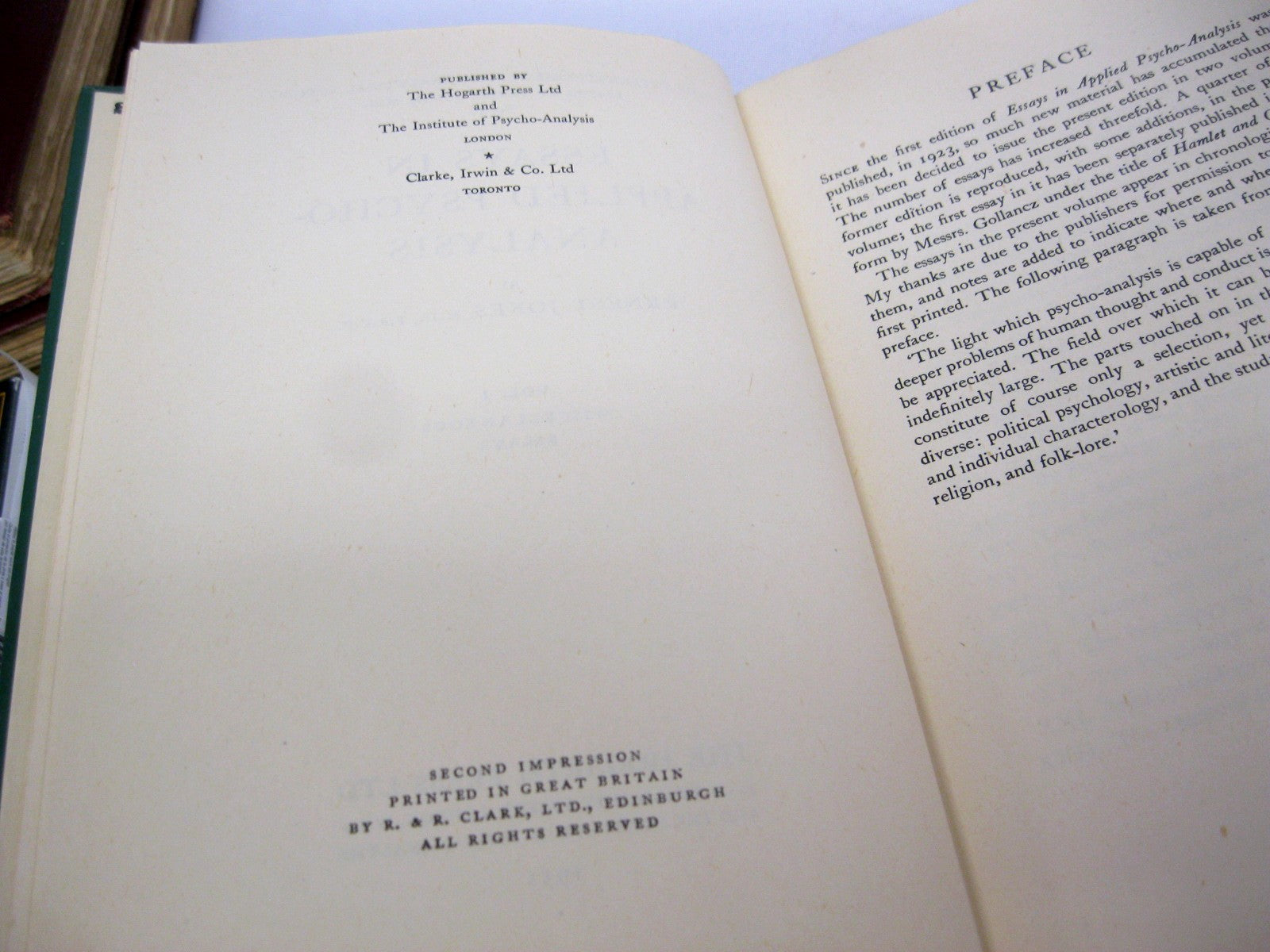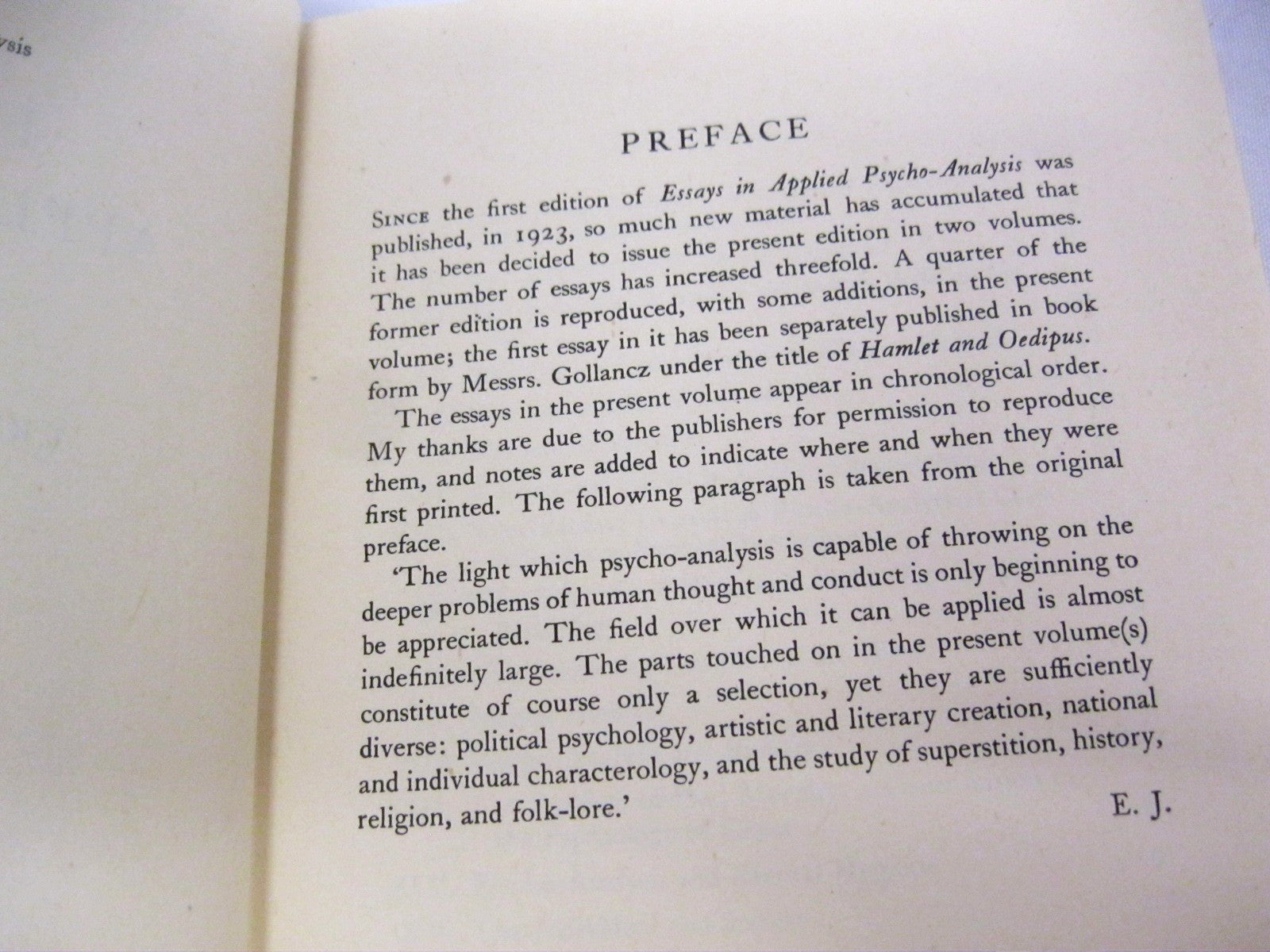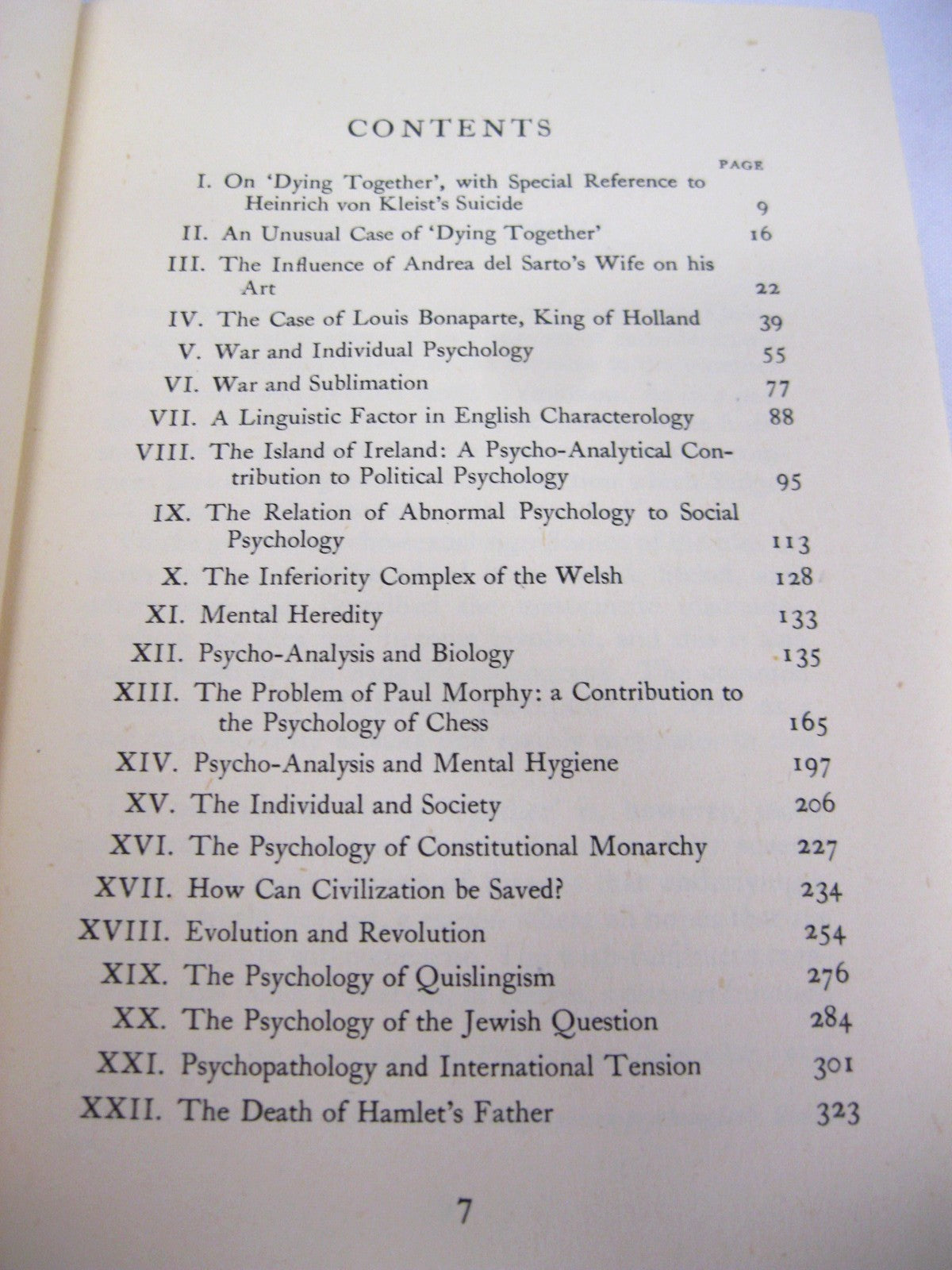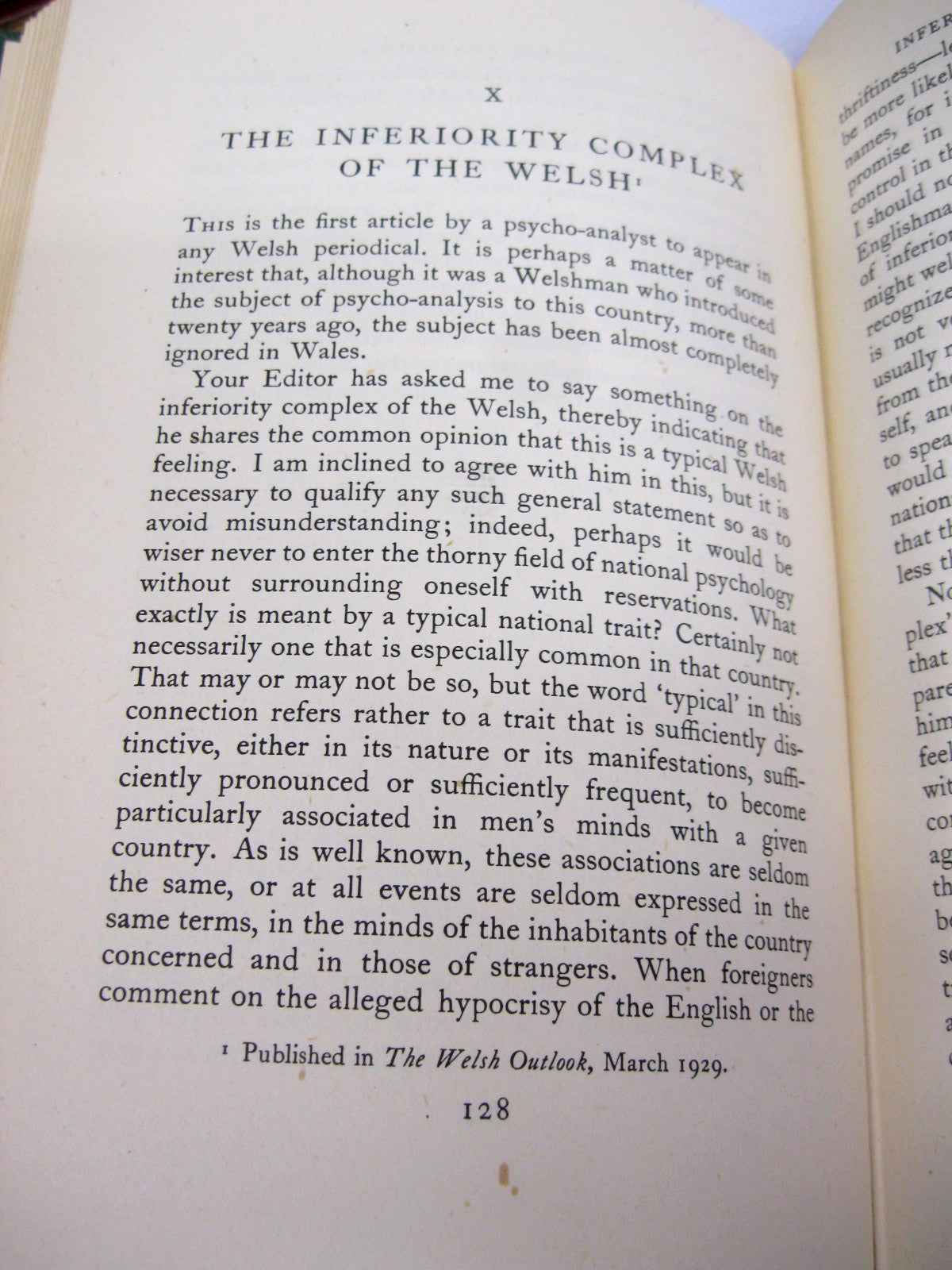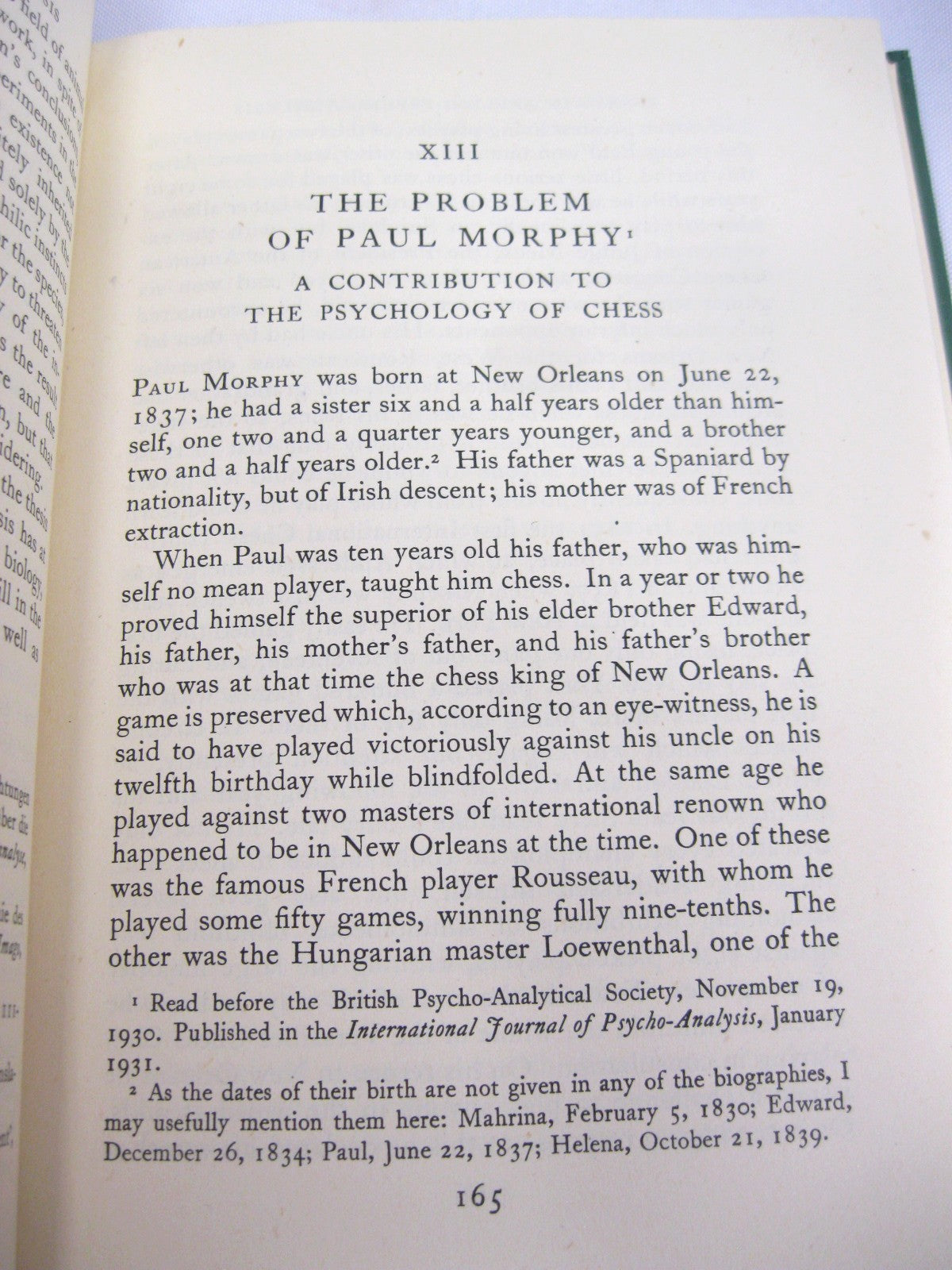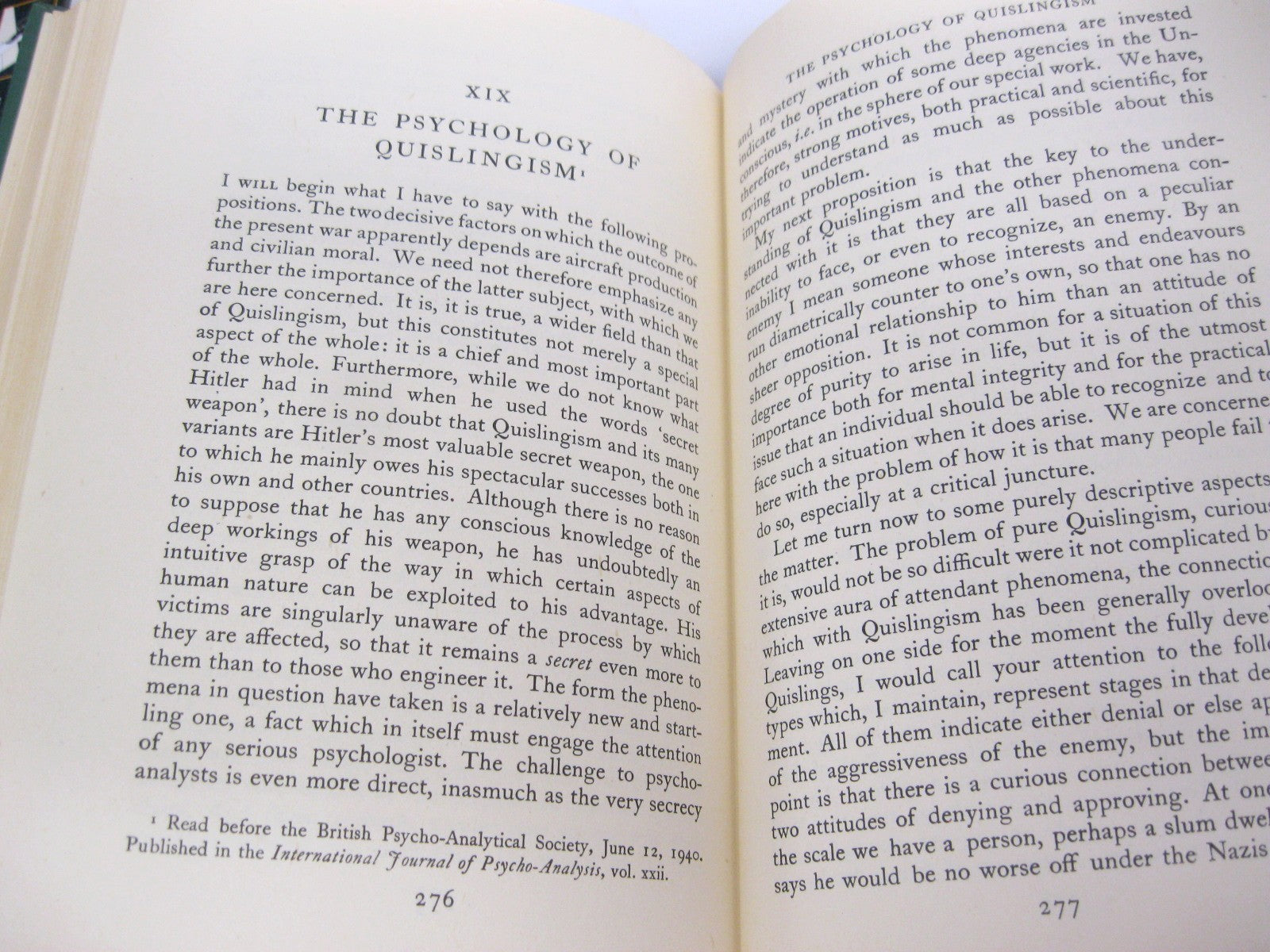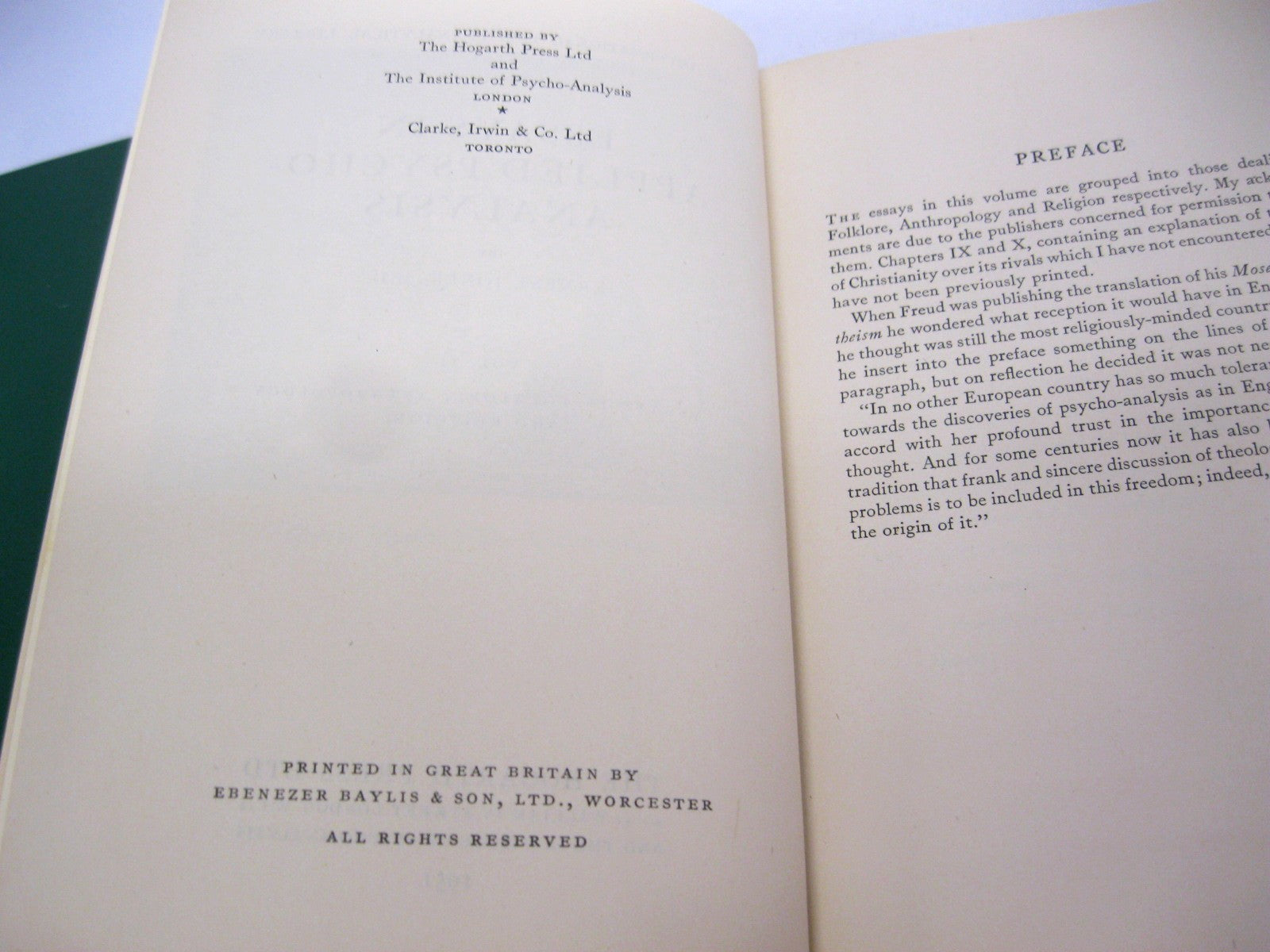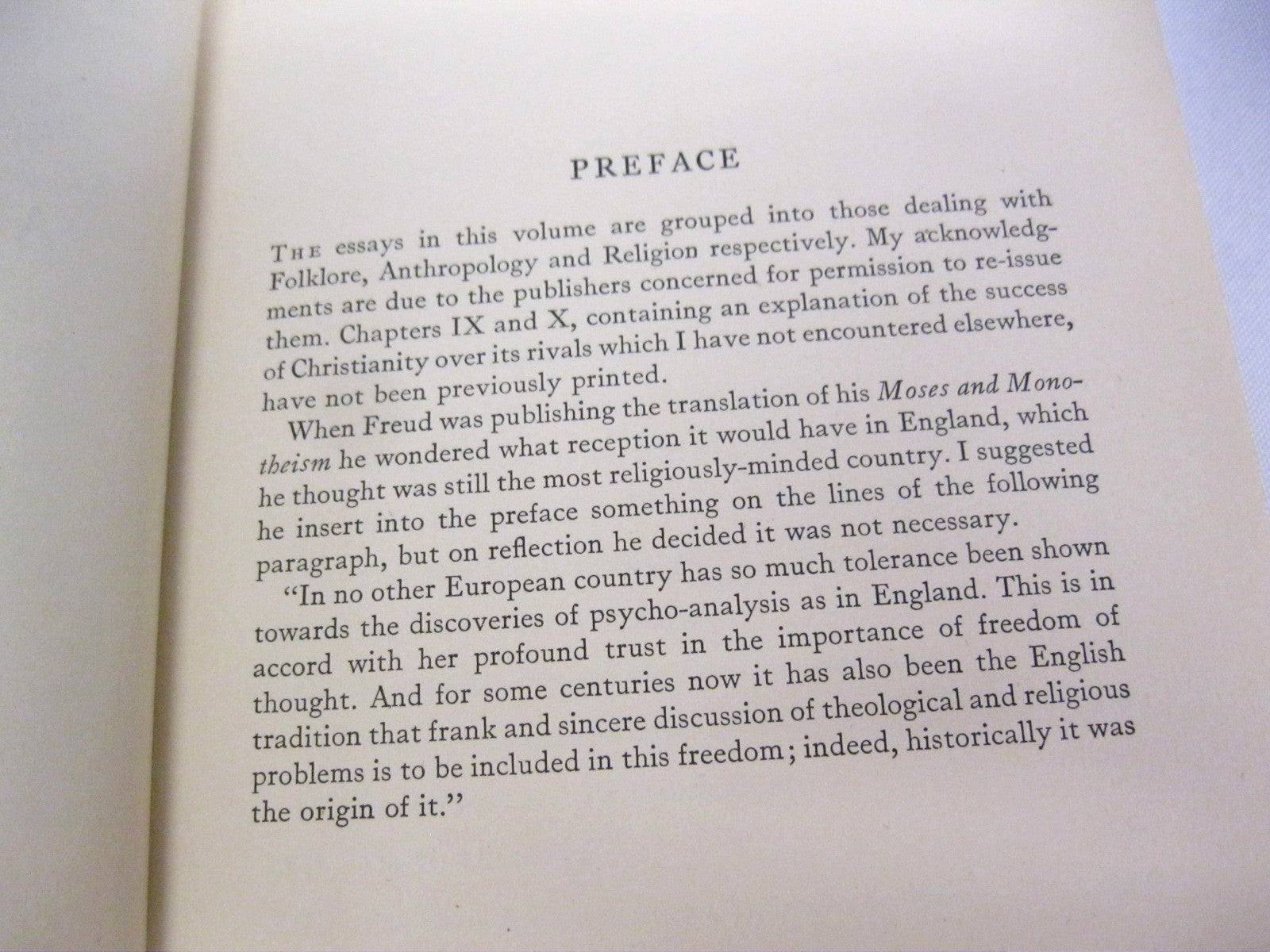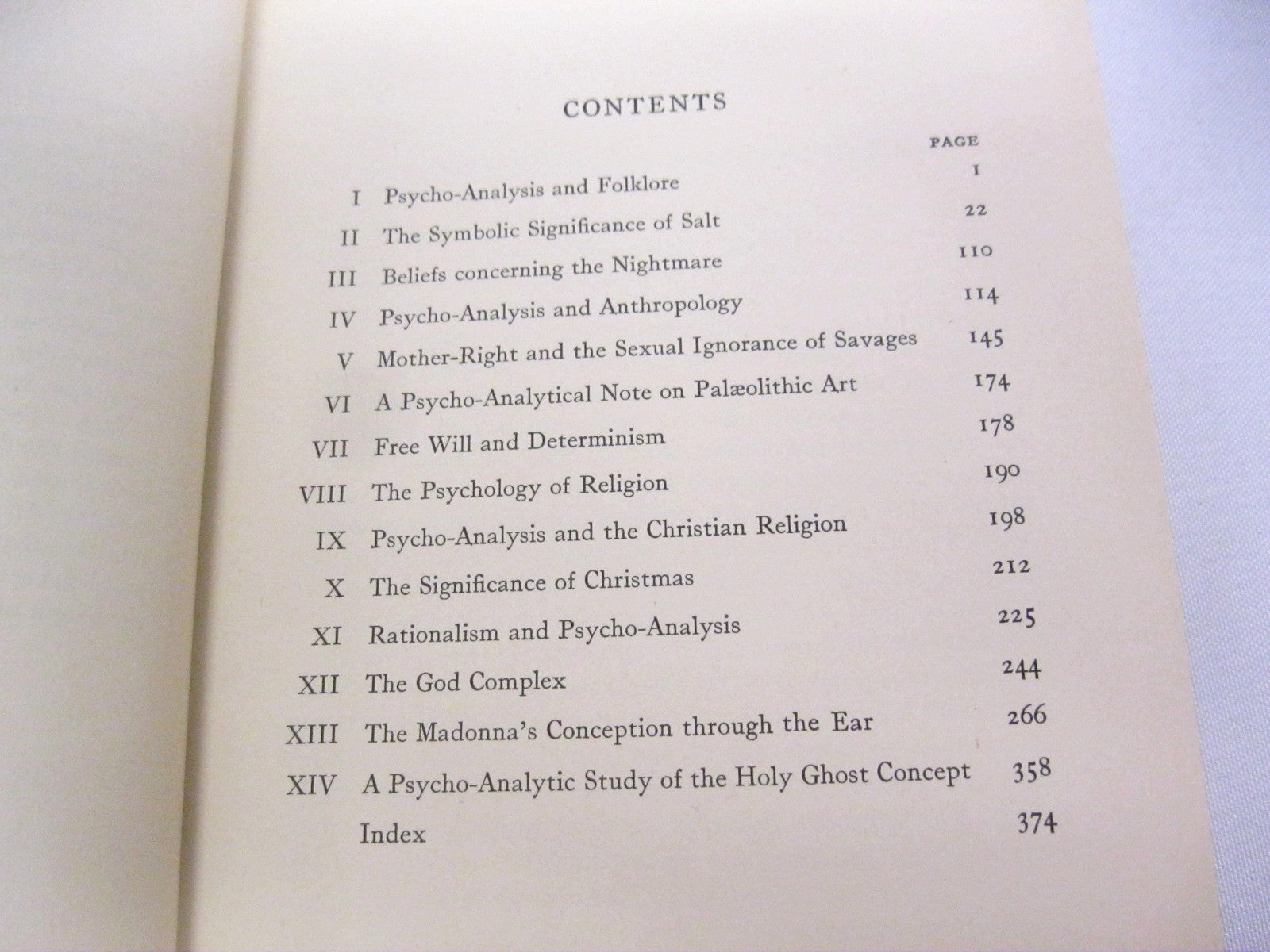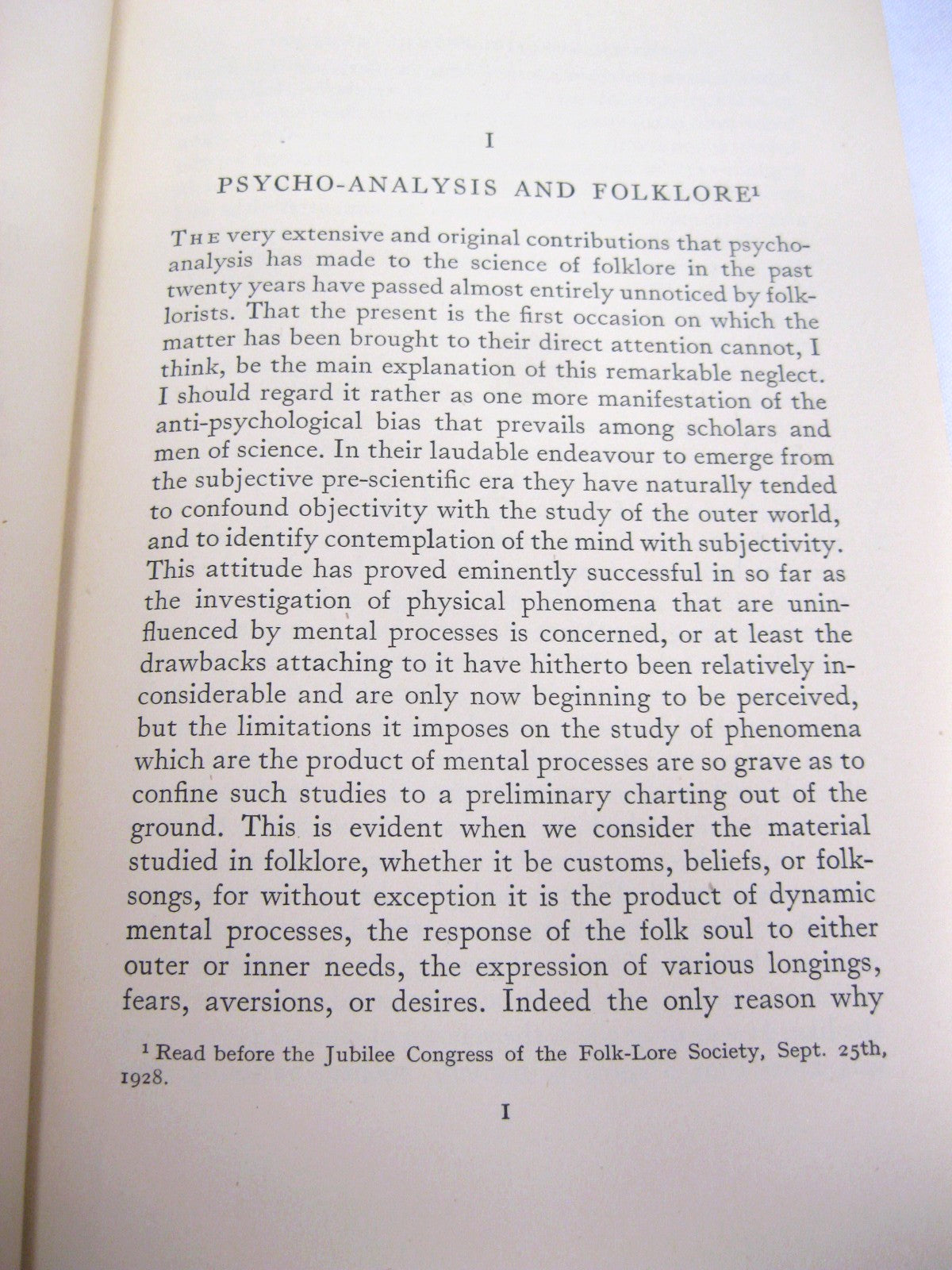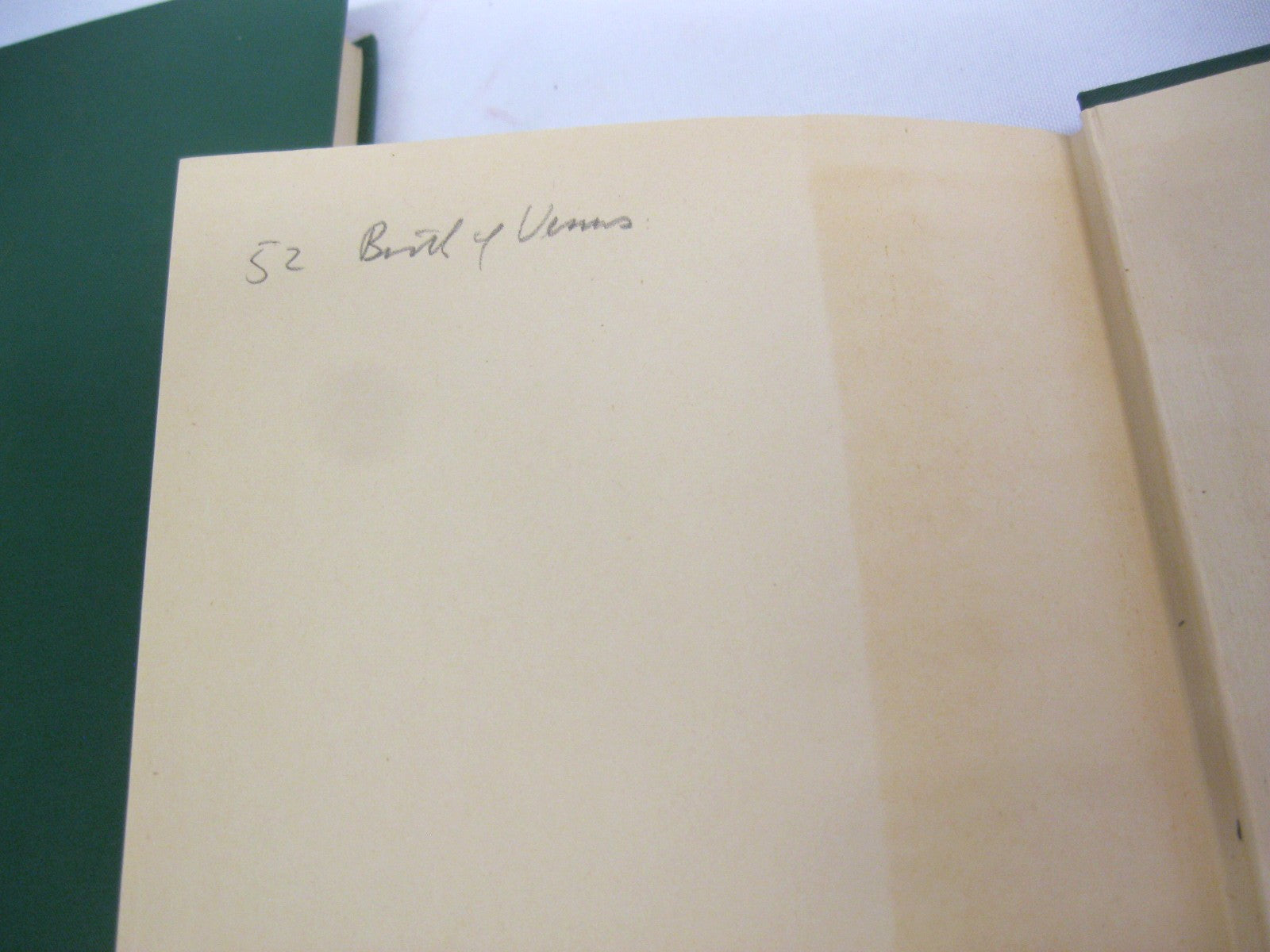Essays in Applied Psychoanalysis by Ernest Jones [Saul Rosenzweig's copy]
Essays in Applied Psychoanalysis by Ernest Jones [Saul Rosenzweig's copy]
Couldn't load pickup availability
Essays in Applied Psycho-Analysis
by Ernest Jones
London: The Hogarth Press / Institute of Psycho-Analysis
The International Psycho-Analytical Library, edited by Ernest Jones. #40.
1951
- Volume 1: Miscellanous Essays (stated second impression, preface stating the first edition came out in 1923)
- Volume 2: Essays in Folklore, Anthropology, and Religion
The eminent American psychologist Saul Rosenzweig's copies, as evidenced by his stamp on the front inside cover of both volumes.
Condition: Hardcovers; no dust jackets, cover boards have minimal apparent wear. Interiors are clean and neat, and bindings are firm.
wiki: "Alfred Ernest Jones FRCP MRCS (1 January 1879 – 11 February 1958) was a Welsh neurologist and psychoanalyst. A lifelong friend and colleague of Sigmund Freud from their first meeting in 1908, he became his official biographer. Jones was the first English-speaking practitioner of psychoanalysis and became its leading exponent in the English-speaking world. As President of both the International Psychoanalytical Association and the British Psycho-Analytical Society in the 1920s and 1930s, Jones exercised a formative influence in the establishment of their organisations, institutions and publications.
Saul Rosenzweig (1907–2004) was an American psychologist and therapist who studied subjects such as repression, psychotherapy, and aggression.[1] Rosenzweig, who, with a co-author, has been credited with being the first to attempt to "elicit repression" in a laboratory setting, became well known after publishing a paper discussing "common factors" underlying competing approaches to psychotherapy. / ... Rosenzweig's study of aggression led to the development of the Rosenzweig Picture-Frustration Study, a test of latent hostility. The Rosenzweig Picture Frustration Study is usually considered a semi-projective technique and involves an examinee responding verbally to a semi-ambiguous picture scenario. ... The test became popular in Europe and was featured in Stanley Kubrick's film A Clockwork Orange (1971)."
![Essays in Applied Psychoanalysis by Ernest Jones [Saul Rosenzweig's copy]](http://tomthebookguy.com/cdn/shop/files/IMG_0566.jpg?v=1690493107&width=1445)
![Essays in Applied Psychoanalysis by Ernest Jones [Saul Rosenzweig's copy]](http://tomthebookguy.com/cdn/shop/files/IMG_0576.jpg?v=1690493110&width=1445)
![Essays in Applied Psychoanalysis by Ernest Jones [Saul Rosenzweig's copy]](http://tomthebookguy.com/cdn/shop/files/IMG_0569.jpg?v=1690493110&width=1445)
![Essays in Applied Psychoanalysis by Ernest Jones [Saul Rosenzweig's copy]](http://tomthebookguy.com/cdn/shop/files/IMG_0567.jpg?v=1690493110&width=1445)
![Essays in Applied Psychoanalysis by Ernest Jones [Saul Rosenzweig's copy]](http://tomthebookguy.com/cdn/shop/files/IMG_0568.jpg?v=1690493110&width=1445)
![Essays in Applied Psychoanalysis by Ernest Jones [Saul Rosenzweig's copy]](http://tomthebookguy.com/cdn/shop/files/IMG_0570.jpg?v=1690493110&width=1445)
![Essays in Applied Psychoanalysis by Ernest Jones [Saul Rosenzweig's copy]](http://tomthebookguy.com/cdn/shop/files/IMG_0571.jpg?v=1690493110&width=1445)
![Essays in Applied Psychoanalysis by Ernest Jones [Saul Rosenzweig's copy]](http://tomthebookguy.com/cdn/shop/files/IMG_0572.jpg?v=1690493110&width=1445)
![Essays in Applied Psychoanalysis by Ernest Jones [Saul Rosenzweig's copy]](http://tomthebookguy.com/cdn/shop/files/IMG_0573.jpg?v=1690493111&width=1445)
![Essays in Applied Psychoanalysis by Ernest Jones [Saul Rosenzweig's copy]](http://tomthebookguy.com/cdn/shop/files/IMG_0574.jpg?v=1690493111&width=1445)
![Essays in Applied Psychoanalysis by Ernest Jones [Saul Rosenzweig's copy]](http://tomthebookguy.com/cdn/shop/files/IMG_0575.jpg?v=1690493110&width=1445)
![Essays in Applied Psychoanalysis by Ernest Jones [Saul Rosenzweig's copy]](http://tomthebookguy.com/cdn/shop/files/IMG_0577.jpg?v=1690493110&width=1445)
![Essays in Applied Psychoanalysis by Ernest Jones [Saul Rosenzweig's copy]](http://tomthebookguy.com/cdn/shop/files/IMG_0578.jpg?v=1690493107&width=1445)
![Essays in Applied Psychoanalysis by Ernest Jones [Saul Rosenzweig's copy]](http://tomthebookguy.com/cdn/shop/files/IMG_0579.jpg?v=1690493109&width=1445)
![Essays in Applied Psychoanalysis by Ernest Jones [Saul Rosenzweig's copy]](http://tomthebookguy.com/cdn/shop/files/IMG_0580_80bc2f6a-de77-4a89-853c-052802011ba4.jpg?v=1690493110&width=1445)
![Essays in Applied Psychoanalysis by Ernest Jones [Saul Rosenzweig's copy]](http://tomthebookguy.com/cdn/shop/files/IMG_0581_b1946253-45f4-454c-aad8-f40bd8353a50.jpg?v=1690493111&width=1445)
